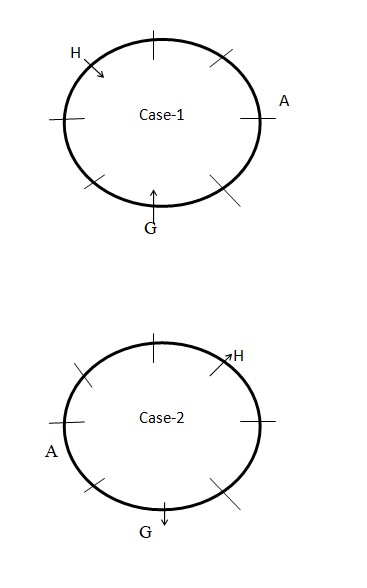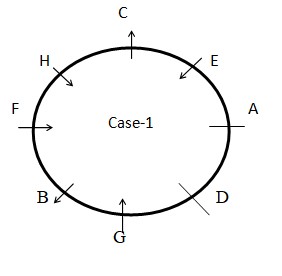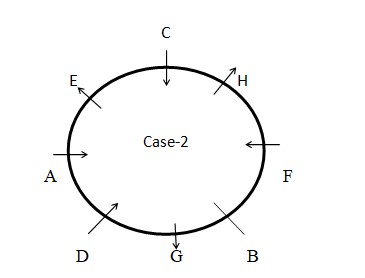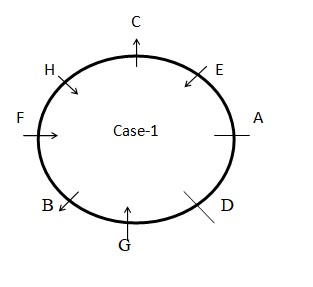Question
Who site second to the right of
E. Study the following information to answer the given questions: Eight persons A, B, C, D, E, F, G and H sit around the circular table. Some of them face towards the centre while some face away from the centre. Not more than two adjacent persons face in same direction. F faces towards the centre and does not sit adjacent to G. A sits second to the right of G. C and E are immediate right of each other. Two persons sit between H and G. D and A face in same direction. Both G and H face in same direction. F and D do not face in same direction. A and H are not adjacent to each other. E sits opposite to B, who does not sit adjacnet to A.Solution
A sits second to the right of G. Two persons sit between H and G.Both G and H face in same direction. A and H are not adjacent to each other  C and E are immediate right of each other. E sits opposite to B, who does not sit adjacnet to A. F faces towards the centre and does not sit adjacent to G. D and A face in same direction. Not more than two adjacent persons face in same direction.
C and E are immediate right of each other. E sits opposite to B, who does not sit adjacnet to A. F faces towards the centre and does not sit adjacent to G. D and A face in same direction. Not more than two adjacent persons face in same direction. 
 F and D do not face in same direction. So, case2won’t be possible
F and D do not face in same direction. So, case2won’t be possible 
- The Asian Development Bank recently approved a policy-based loan to strengthen India's logistics sector and export capabilities. What is the value of this ...
- Which classical dance form originated in and is traditionally associated with Uttar Pradesh?
Which article of the Indian Constitution states that "There shall be a Vice President of India."?
Who was honored with the Global Pride of Sindhi Award 2024?
What is the main component of natural gas?
What is the name of the bilateral air force exercise conducted between India and Oman in September 2024?
By what year does India aim to eliminate malaria?
Which organization signed a Letter of Intent with India's Ministry of Panchayati Raj to enhance community engagement and social change?
Which international group adopted a framework document on climate and sustainable development during a forum held in Russia in August 2024?
- Which nation hosted the multinational air combat exercise "Desert Flag-10" in April 2025, where the Indian Air Force (IAF) sent a contingent to participate...


